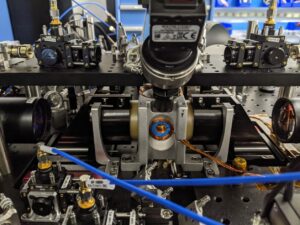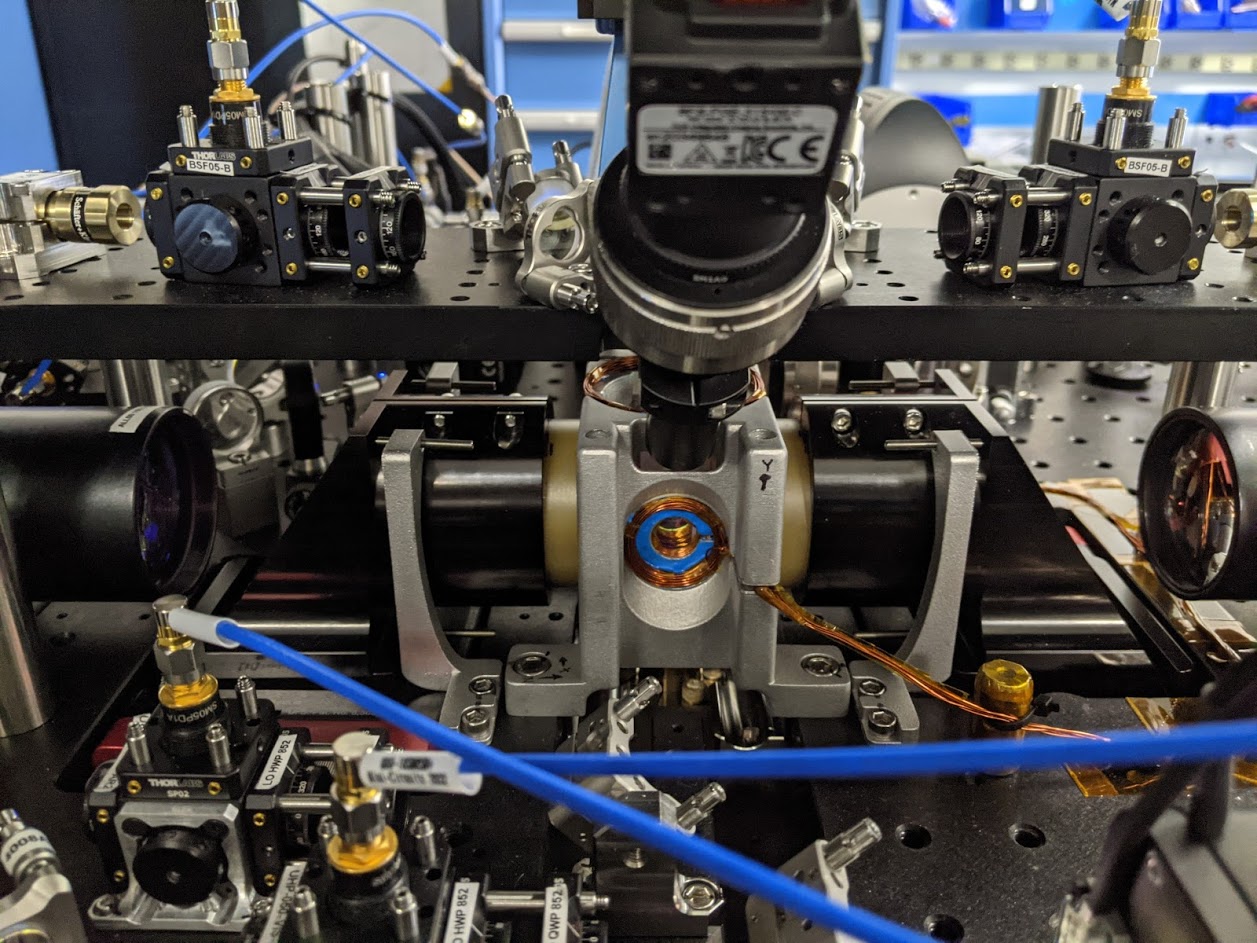
ColdQuanta recently announced that it can trap and address 100 qubits in a large, dense 2-D cold atom array. What that means is the company is confident that its ultracold atom approach is on the right track and that the cold atom approach offers advantages in terms of scalability and fidelity to power practical quantum computing, according to Paul Lipman, president of quantum computing at ColdQuanta.
While this advance may seem to have appeared out of nowhere, as a modality, the technology behind cold atom-driven quantum computers has been years — if not decades — in the making and has a long research history to back them up.
“Cold atom, as a modality for quantum computing, is the new kid on the block for quantum computing,” said Lipman. “But… it’s absolutely a proven technology for quantum sensing.”
In fact, ColdQuanta was founded in 2007, making it a pioneering quantum technology firm and the company’s scientific bench includes leading researchers in atomic and quantum physics, as well. ColdQuanta was founded on the work of Dana Anderson, who serves as ColdQuanta’s Chief Technology Officer, and continues to be a physics professor at the University of Colorado Boulder.

“He was part of a team that first created a Bose Einstein condensate, which is the fifth form of matter,” said Lipman. “Essentially, if you cool atoms down to microkelvin, they take on this quantum state, and it has really interesting quantum properties.”
ColdQuanta uses lasers to trap atoms, which can help deal with heat.
Ultracold Can Be Ultra-Cool and Ultra-Difficult
In quantum computing that experience of working in ultracold environments is a necessity because heat is one of the enemies of quantum.
Heat is simply the motion of atoms and molecules bouncing around, which sounds innocuous enough, but that bouncing behavior can throw off the extremely sensitive computational quantum processes. Cooling, then, is helpful because it reduces that motion, said Lipman.
Researchers have created a few different approaches — or modalities — that manage heat in quantum computing, he explained. Superconducting systems use liquid helium, for example, along with dilution techniques to cool qubits down to the millikelvin range.
ColdQuanta uses lasers to trap atoms, which can help deal with heat, said Lipman.
“Think of an atom being held in place by a laser light and by trapping the atom, we’re reducing its motion and reducing its temperature,” said Lipman.
The atoms in ColdQuanta’s quantum computer are cooled to about five millionths of a degree above absolute zero, which would be three orders of magnitude colder than superconducting quantum computers, which are generally cooled to a few millikelvins. The coherence times are also orders of magnitude longer than the coherence times recorded by superconducting computers, he added.
A critical difference, though, is that ColdQuanta is doing this without dilution refrigerators.
“If you think about these enormous room-size dilution refrigerators that the superconducting quantum computers require, our qubits are trapped in a glass cell that will fit in the palm of your hand,” Lipman said.
This is where ColdQuanta’s scientific legacy comes in handy, Lipman said. ColdQuanta has 15-years experience — and has become a world leader — in developing ultra-high vacuum cells that are integral to tracking and manipulating atoms. In what must look like the quantum computer version of a Mission Impossible break in scene, atoms are trapped in a grid of laser light. A Caesium atom — which have already been used in quantum technology, such as atomic clocks, for example — is trapped in each of the vertex of that grid of laser beams.
“We can then address and manipulate those atoms and execute gates on those qubits,” said Lipman.
It’s an incredibly delicate operation — we’re talking about space that’s no wider than a human hair — but the payoff can be spectacular in delivering quantum computers.
“We would not need to build these football-field-sized refrigerators to scale up the number of qubits that we’re dealing with in the array.”
Cold Atom Advantages
ColdQuanta believes its innovative approach can deliver real advantages in several important aspects of quantum performance, including qubit count, coherence times and qubit connectivity.
Caesium atoms offer several advantages to curbing noise and promoting all aspects of performance, for example.
“Every Caesium atom is absolutely exactly the same — they’re nature’s qubit,” said Lipman, adding that there are no manufacturing defects or manufacturing issues in the atoms.
They are also about five orders of magnitude smaller than a superconducting qubit and packed within two to three microns apart.
The team has built an array of 100 qubits – and in the longer term aims to scale that to 1,000 qubits and beyond. Additionally, scaling within a single glass cell means that ColdQuanta researchers will not need to re-invent the science and form factors.
“We would not need to build these football-field-sized refrigerators to scale up the number of qubits that we’re dealing with in the array,” said Lipman.
In The Rack or On The Cloud?
While building a device that delivers quantum advantage is, obviously, the critical step for quantum computing companies, it’s not the last. Many companies are struggling with how to place the power of these complex, sensitive and expensive devices into the hands of their customers. There are a few options: deliver the actual physical devices to customers, or place the quantum computers online and let customers tap into their computational power virtually.
ColdQuanta is launching with a cloud-based service, but, in another advantage of their approach, believes its equipment lends itself to either option. They will let the customer decide.
“Our belief is that eventually we will be able to reduce the form factor down to where it could fit in a 19-inch rack mounted unit,” said Lipman. “And, now all of a sudden, that opens up a whole range of use cases where the quantum computer can very handily coexist and in a range of environments. But, as I say, we will absolutely be driven by customer need in determining how those business models evolve.”
Big Moves for ColdQuanta
Lipman came on board at ColdQuantum this spring. Prior to ColdQuanta, Paul served as CEO of BullGuard, a global leader in AI-enabled cybersecurity, which was acquired by NortonLifeLock.
Lipman’s appointment was part of a series of recent executive hires including Rushton McGarr, Chief Financial Officer and Dan Caruso, Executive Chairman and Interim CEO.
In May 2021, ColdQuanta announced it has secured $20 million in funding from existing investors, including Foundry Group, Global Frontier Quantum Opportunity Fund, LCP Quantum Partners and Maverick Ventures. This brings the company’s total funding to $74 million. ColdQuanta is currently raising its Series B funding.


















